Lighting for 20-Foot Ceilings Ideas
Are you getting enough light from your high ceilings? Check out these lighting for 20 foot ceilings ideas to try out in your home.
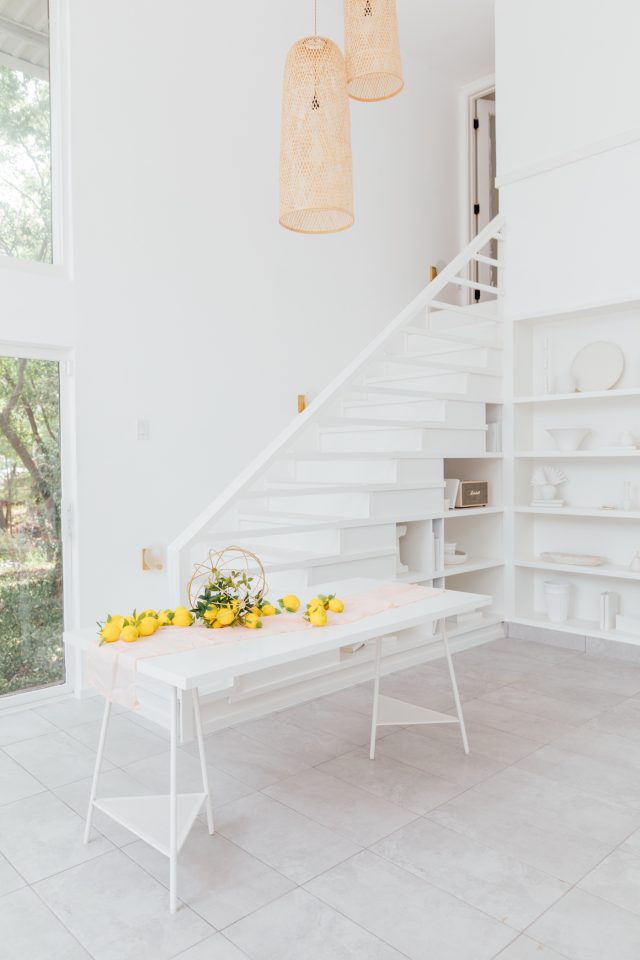
When it comes to decorating your house and making it truly feel like home, the lighting of a room can make or break that feeling. It’s essential to have the best lighting possible to have the best time possible.
In a room with 20-foot ceilings, the right lighting can help to create a sense of warmth and intimacy. Whereas the wrong lighting can make the space feel cold and uninviting.
Typically, ceilings are around 8-10 feet tall. Most light fixtures and light bulbs are designed with a similar height in mind. High ceilings and wide rooms have great potential to be beautiful and grand. But the lighting has to be more than just the classic recessed (built-in ceiling fixtures) bulbs.
Check out our guide to properly light 20-foot ceilings below. You can apply these tips and ideas to any space. And they don’t only apply to your home. We used these ideas when planning the lighting for The Juliana (with this rattan pendant lights and more).
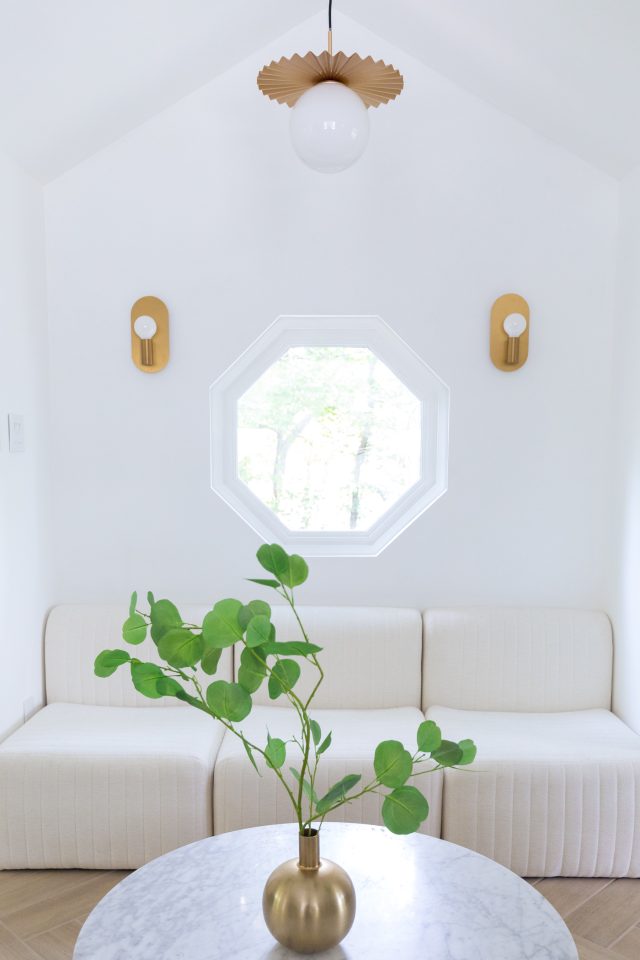
How Do You Light a Room with a Tall Ceiling?
Having tall ceilings is a great thing because you can fit more objects on the walls and make a room feel bigger. However, that also means you have more surface area that you need to illuminate.
And this often means adding more light fixtures and light sources to rooms with tall ceilings compared to smaller, shorter rooms. What are the best ways to go about that?
As a general rule, it’s best to opt for high-lumen bulbs and fixtures that have broad beams. High lumen bulbs are extra bright. It also helps to place lights from the ceiling that hang down, such as chandeliers and pendants. If you want to switch things up, you can also use certain LED lights and laser projectors too.
As important as how to is how not to. Too many lights hanging low can make the ceiling seem even higher than it is and also make the room appear darker. If there are many lights that are too close to the ceiling, the room will feel like a gym or stadium.

How Many Lumens Do You Need to Light a Room?
Figuring out how ideal lumens (brightness) needed depends on your square footage (regardless of how high your ceiling is).
How to calculate how many lumens you will need for a room:
1 — First, calculate the room’s square footage by multiplying the room’s length and the room’s width.
2 — Then, Take that number and multiply it by “foot candles” (lumens per square foot).
Commonly used foot candle values:
- Kitchen — 30 to 40 lm/sq ft
- Living room — 10 to 20 m/sq ft
- Bedroom — 10 to 20 m/sq ft
- Dining room — 30 to 40 lm/sq ft
- Bathroom — 70 to 80 lm/sq ft
- Hallway — 5 to 10 lm/sq ft
Typically, a light bulb’s lumens run between 1,500 to 1,700 lumens. So to light the 200-square-foot room, you will need 2-4 light bulbs in the room.
Now accounting for ceiling height, you’ll need to add more bulbs at your discretion. The key is to distribute the light fixtures (lamps to lava lamps to chandeliers) across the space. You’ll want to light the room while also elevating your surroundings and showing the height of the tall room.
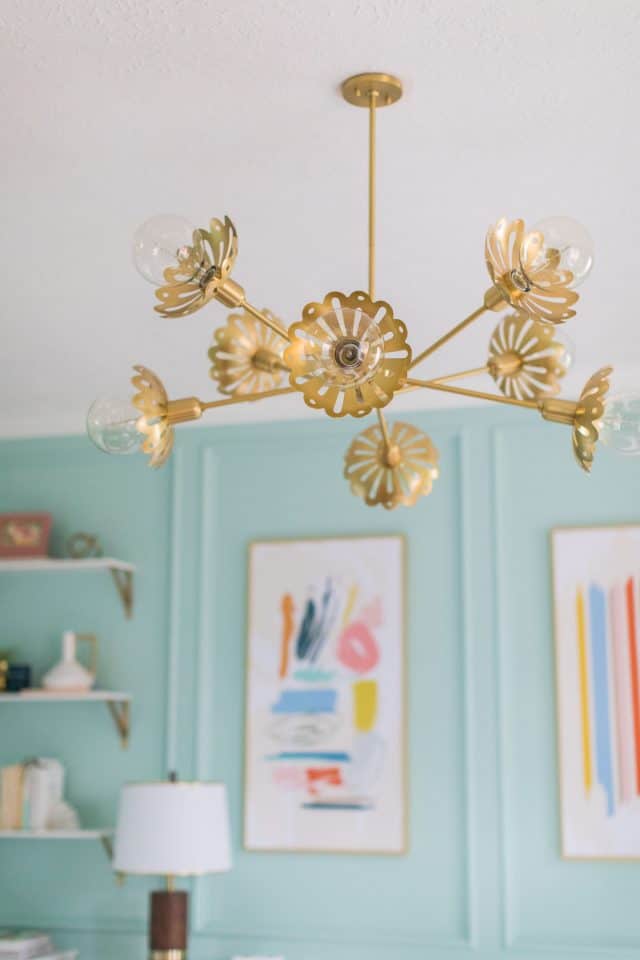
Choosing Warm Light Versus White Light
In addition to the type of lighting, it is also important to consider the color temperature of the light. Warm white light (2700K-3000K) is often used in living spaces and bedrooms to create a cozy and inviting atmosphere.
Cool white light (4000K-5000K) is more commonly used in spaces where tasks are performed, such as offices or kitchens.
Ideas for Lighting 20-Foot Ceilings
1 — Hang pendants or chandeliers.
- Chandeliers are a classic choice for spaces with high ceilings. Plus, they come in a wide range of styles to suit any decor.
- Pendant lights are another option for ambient lighting, and they are often used in kitchens or dining rooms. These lights are suspended from the ceiling on a cord or chain. Pendant lights can be used to provide focused illumination on a specific area, such as a kitchen island or dining table.
Note: When suspending lights from the ceiling, choose large hanging lights to allow for more width and space for light to reflect upon.
2 — Use long-lasting LED bulbs or fixtures.

The use of LEDs lowers your energy use (and therefore your energy bill). Plus, that also means fewer trips to change lightbulbs at the top of the ceiling. LED bulbs and fixtures are generally more expensive upfront than traditional bulbs. But they can save money in the long run due to their energy efficiency and long lifespan.
3 — Pair recessed lighting wisely with hanging lights.
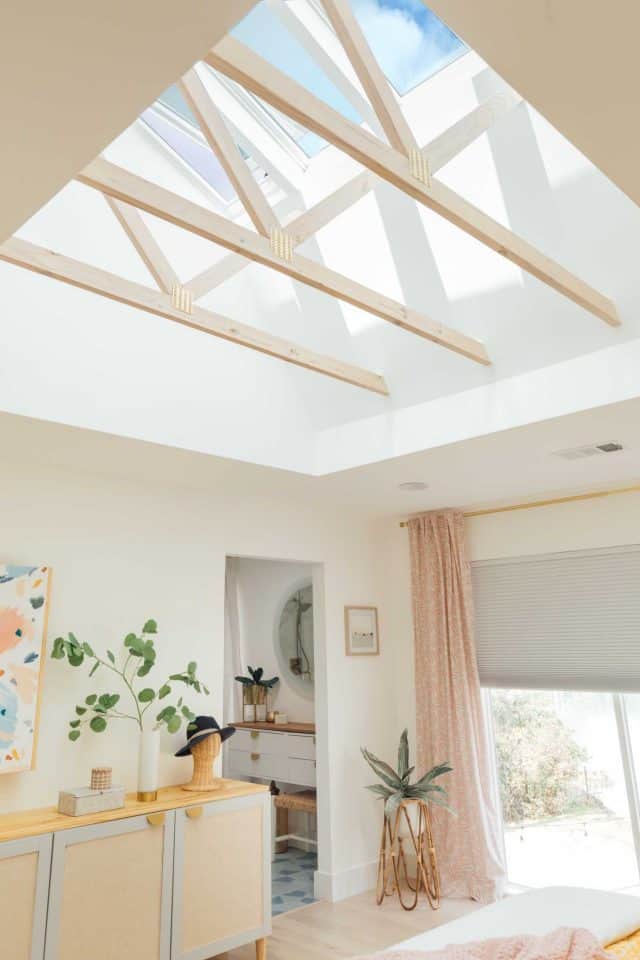
Select recessed lights with a narrower beam angle to highlight certain parts of the room. Or space them 2 or 3 feet away from the wall to highlight the wall and avoid black darkness along the walls.
Although subtle, it will step up the room lighting substantially. Select recessed lighting with a reflector trim to reflect and intensify the light emitting from the bulb. This will allow the light to fill the large space better than a narrower beam.
4 — Maximize natural light.
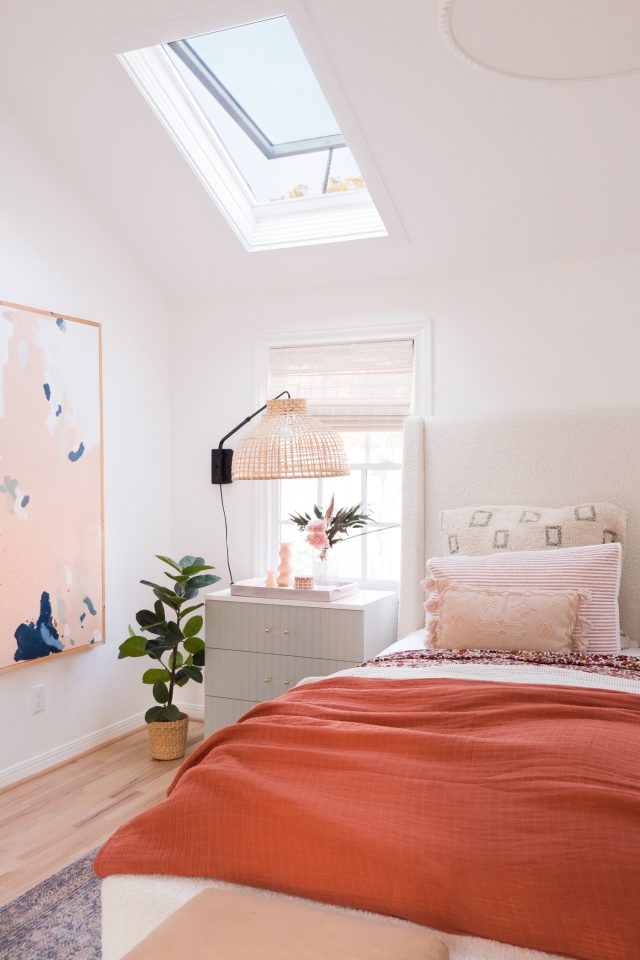
Natural light is often considered the most desirable type of light. It is free, energy efficient, and provides a natural, warm glow that is pleasing to the eye. Many tall-ceiling rooms feature tall windows. So it’s a great opportunity to take advantage of that natural light too. While it shouldn’t be the entire lighting design, it should definitely be the basis of it.
Consider the orientation of the space relative to the sun to maximize natural light. For example, south facing windows will receive the most direct sunlight. While east and west facing windows will receive more indirect light. North-facing windows will receive the least amount of sunlight.
Try keeping the blinds and curtains open to sunlight (both direct and indirect) during the daytime. Then, at night, switch to softer artificial lighting options.
5 — Follow the three layers of lighting design rule.

Three-layered lighting is a design technique that involves using three different layers of lighting to create a well-balanced and functional space. It’s important to include lighting for all three layers to provide the best flow of light without putting in too much effort.
- Ambient lighting: Ceiling lighting that focuses on the top of the room.
- Accent lighting: Highlights the middle area such as art and decor.
- Task lighting: Illuminates the bottom of the room such as your furniture
6 — Install additional wall lighting.
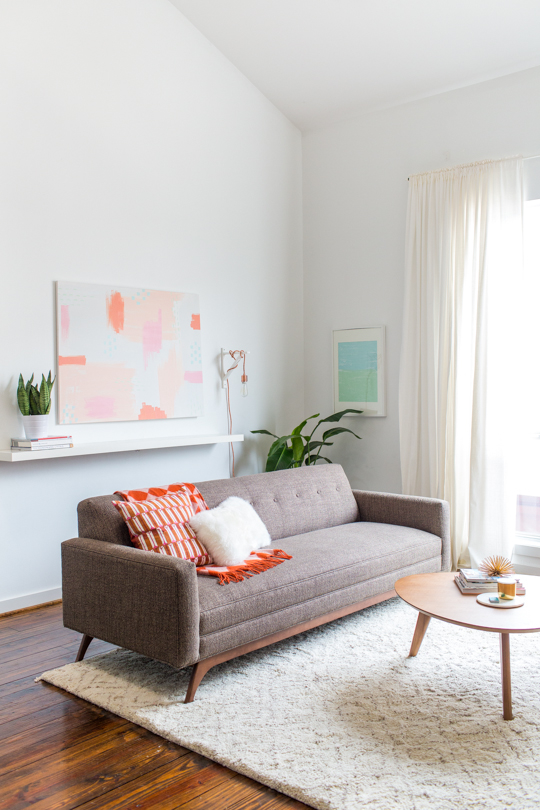
Wall lighting is a great option for spaces with high ceilings. It can help to bring light down to a more manageable level and create a sense of intimacy in a large, open space.
- Wall sconces: Wall sconces are mounted on the wall. They can be used to provide overall illumination for a room or to highlight specific areas or features.
- Picture lights: These lights are specifically designed to highlight artwork or other decorative elements on the wall. They’re typically mounted above or below the artwork. Keep in mind that the higher you hang your art, the higher the ceilings look.
- Wall-mounted fixtures: Lights that are mounted on the wall. They can be used to provide overall illumination for a room or to highlight specific areas or features.
7 — Opt for track or strip lighting.
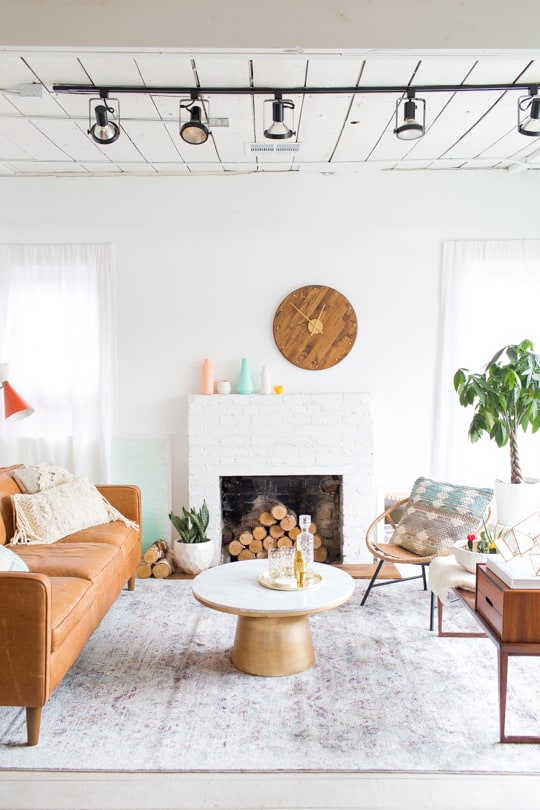
Track and strip lighting are two types of lighting that are used to provide focused illumination on specific areas or features.
- Track lighting: Consists of a series of light fixtures that are mounted on a track. And you can adjust the direct light to highlight specific areas or features, such as artwork or architectural details.
- Strip lighting (or linear lighting): Consists of a long strip of light fixtures that are mounted on a flexible backing. It is also often used to highlight specific areas or features, such as countertops or shelving.
8 — Decorate with lamps and accent lighting.
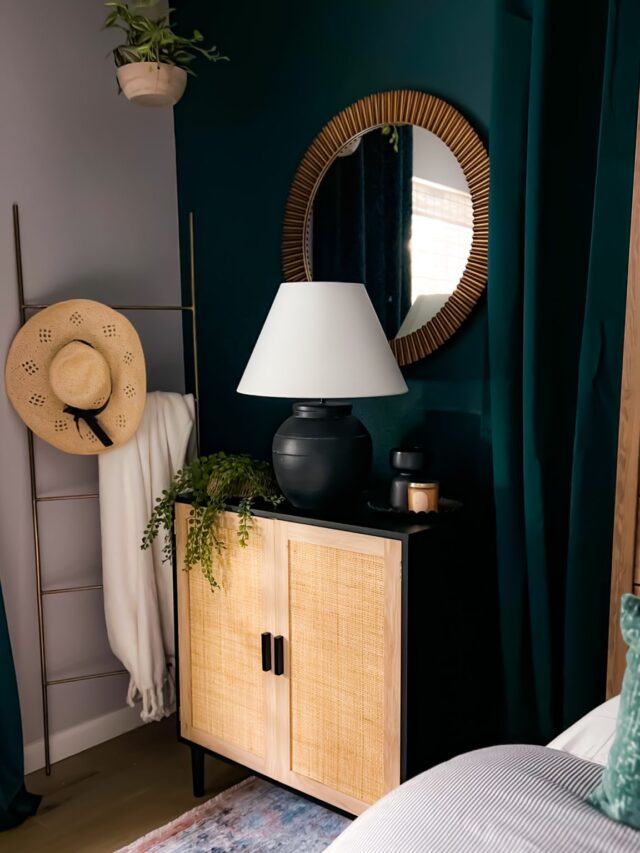
In addition to ambient lighting, task lighting is also important in a space with 20-foot ceilings. Task lighting is designed to provide focused illumination on specific areas or tasks, such as reading or cooking. This type of lighting can be achieved through the use of floor lamps, table lamps, or under cabinet lighting.
The lowest layer of light only really has an impact on high ceilings when the lampshades send small light beams upward, which creates shadows. Try to use drum-shaped lights rather than sharply steep and tapered shaped shades. Drum shaped lights stream downward and upward more evenly.
Additionally, using translucent or less opaque shades is a great way to add more light at the same height, as well. Vary the decor by using a variation of taller standing lamps and smaller table lamps.
DIY Lighting Ideas
- Cardboard Pendant Lights Chandelier
- Basket Pendant Light
- Metallic Pendant Sconce
- Vintage Birdcage Lamp
How to Paint a Porch for an Easy Home Upgrade
Looking for a quick makeover to your exterior? We’re sharing…
Continue Reading How to Paint a Porch for an Easy Home Upgrade
We’re Moving!
That’s right, we’re moving! I know, I know. A ton…
Our Revamped, Open Concept Living Room & Dining Room Design
Explore a harmonious blend of style and functionality as we…
Continue Reading Our Revamped, Open Concept Living Room & Dining Room Design
Lakeside Modern Living Room Before & After
This bright white lakeside modern living room design is the…
Please note that we may earn a commission for some of the above affiliate links. However, products featured are independently selected and personally well-loved by us!

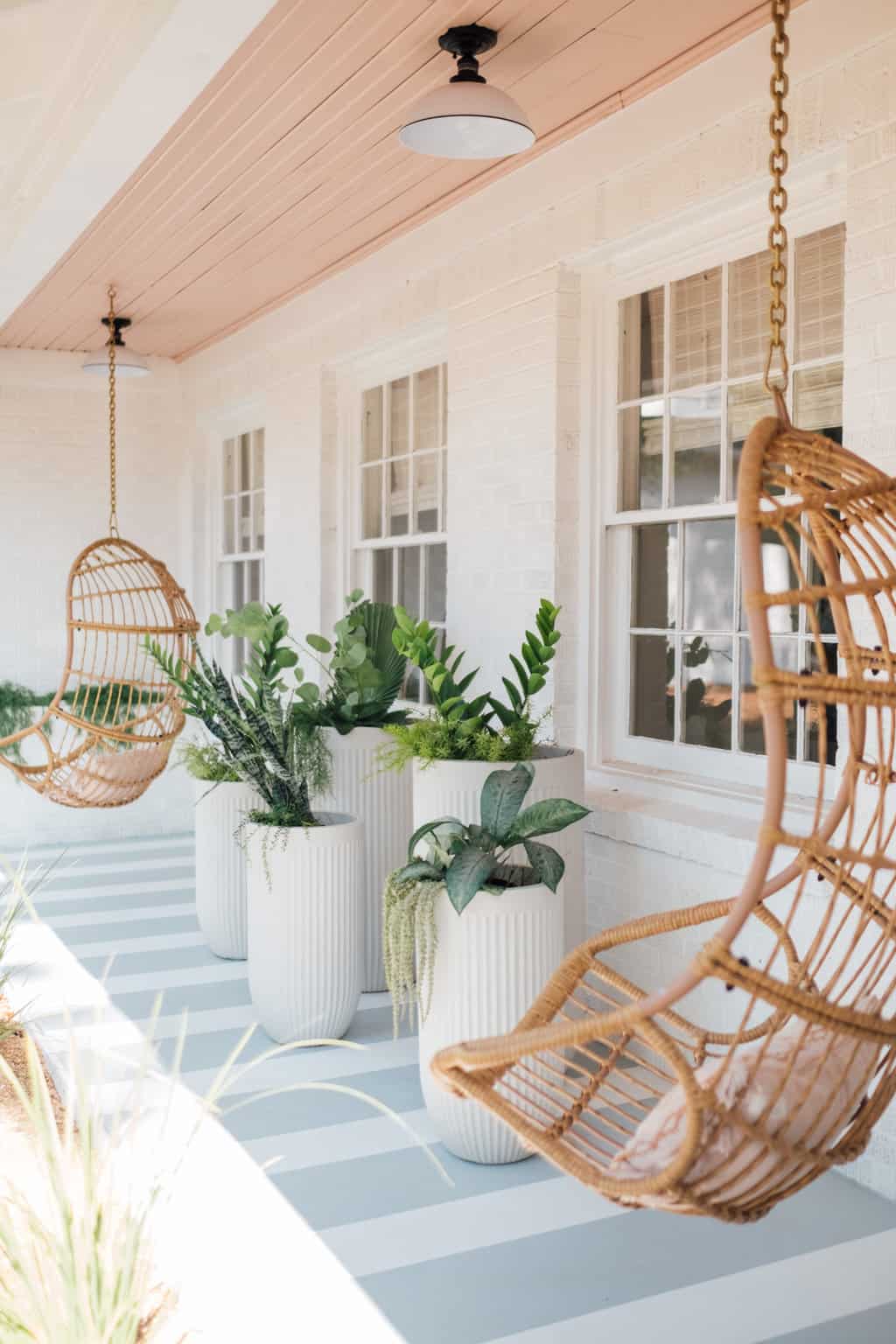

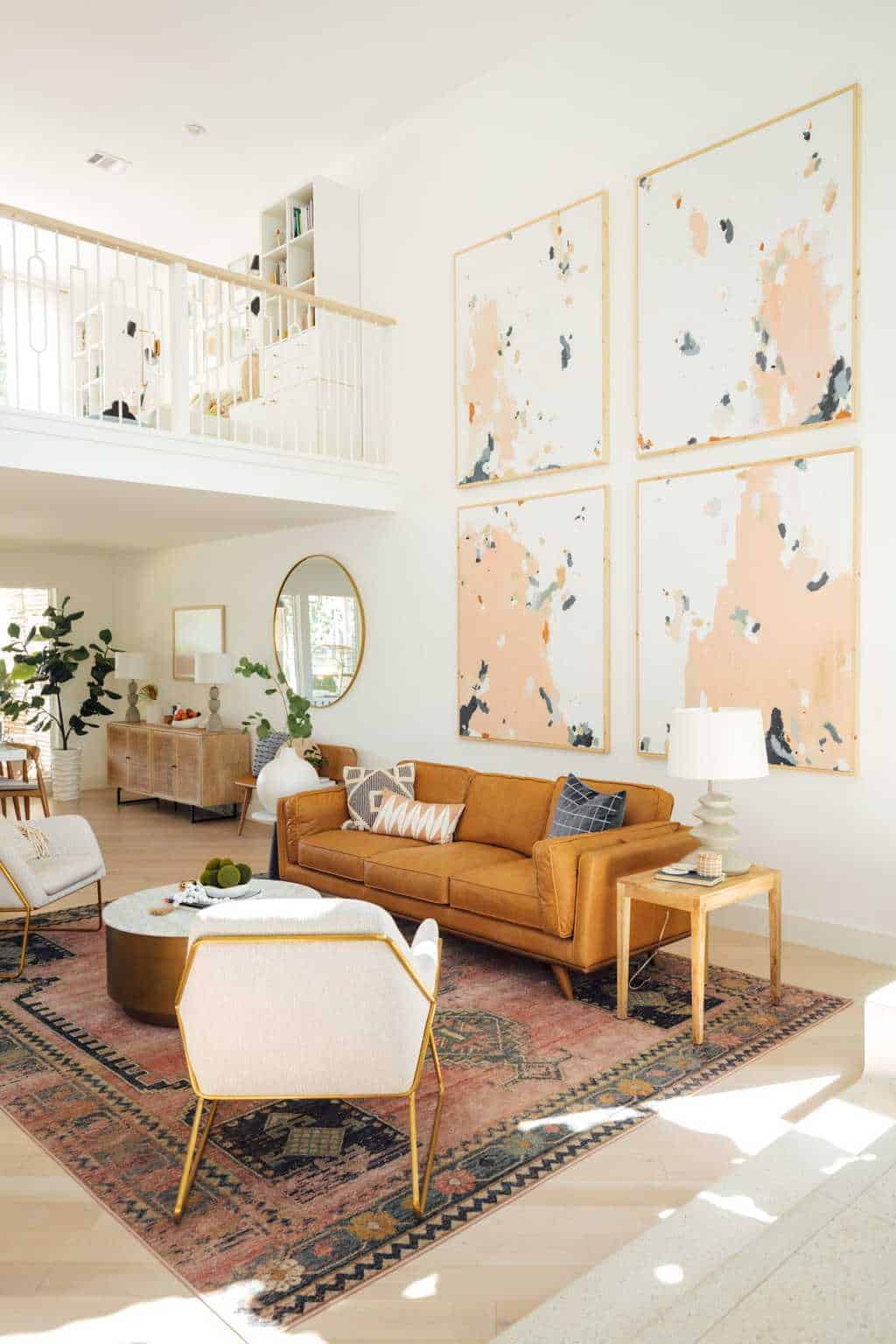
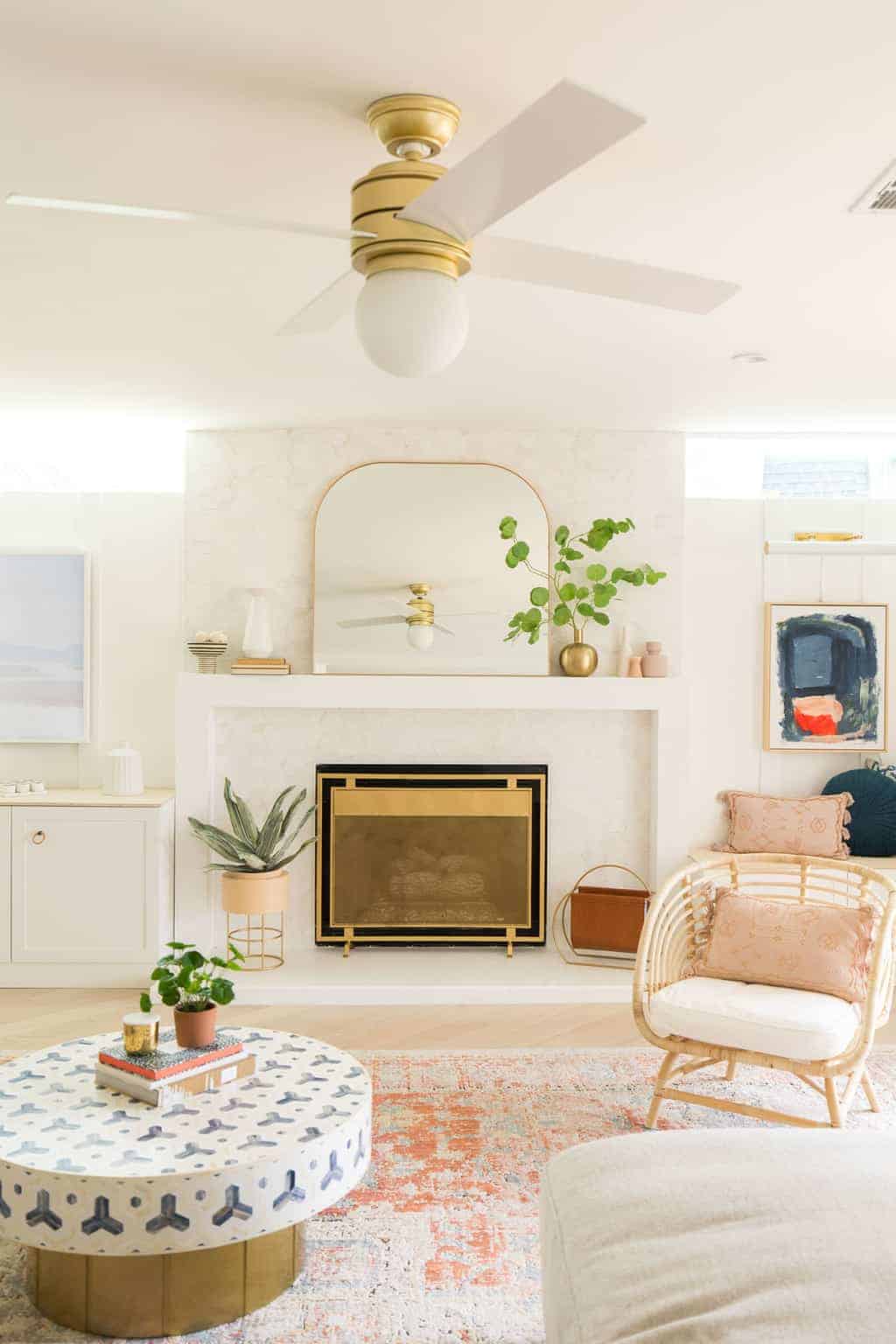
I love how you’ve broken down lighting for 20‑foot ceilings into clear, practical steps—from choosing high‑lumen fixtures, to balancing pendants and recessed lighting, to layering in LEDs, wall lights, and accent lamps . The tip to use a mix of hanging lights and recessed fixtures feels especially smart—it keeps the space feeling warm and intimate instead of cavernous . Plus, calling out the importance of warm vs cool color temps (2700–3000 K for coziness, 4000–5000 K for task zones) shows you really thought through the ambiance .
I can’t wait to apply this in my foyer—maybe start with a grand chandelier and then layer in LED strips, wall sconces, and some accent lamps to hit the “three layers” every room needs. Thanks for turning a tricky 20-foot ceiling into a design opportunity! 😊